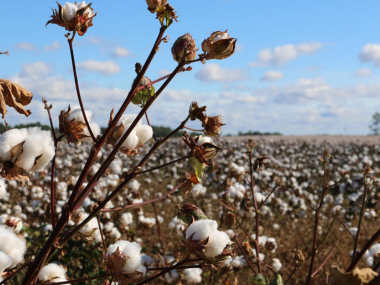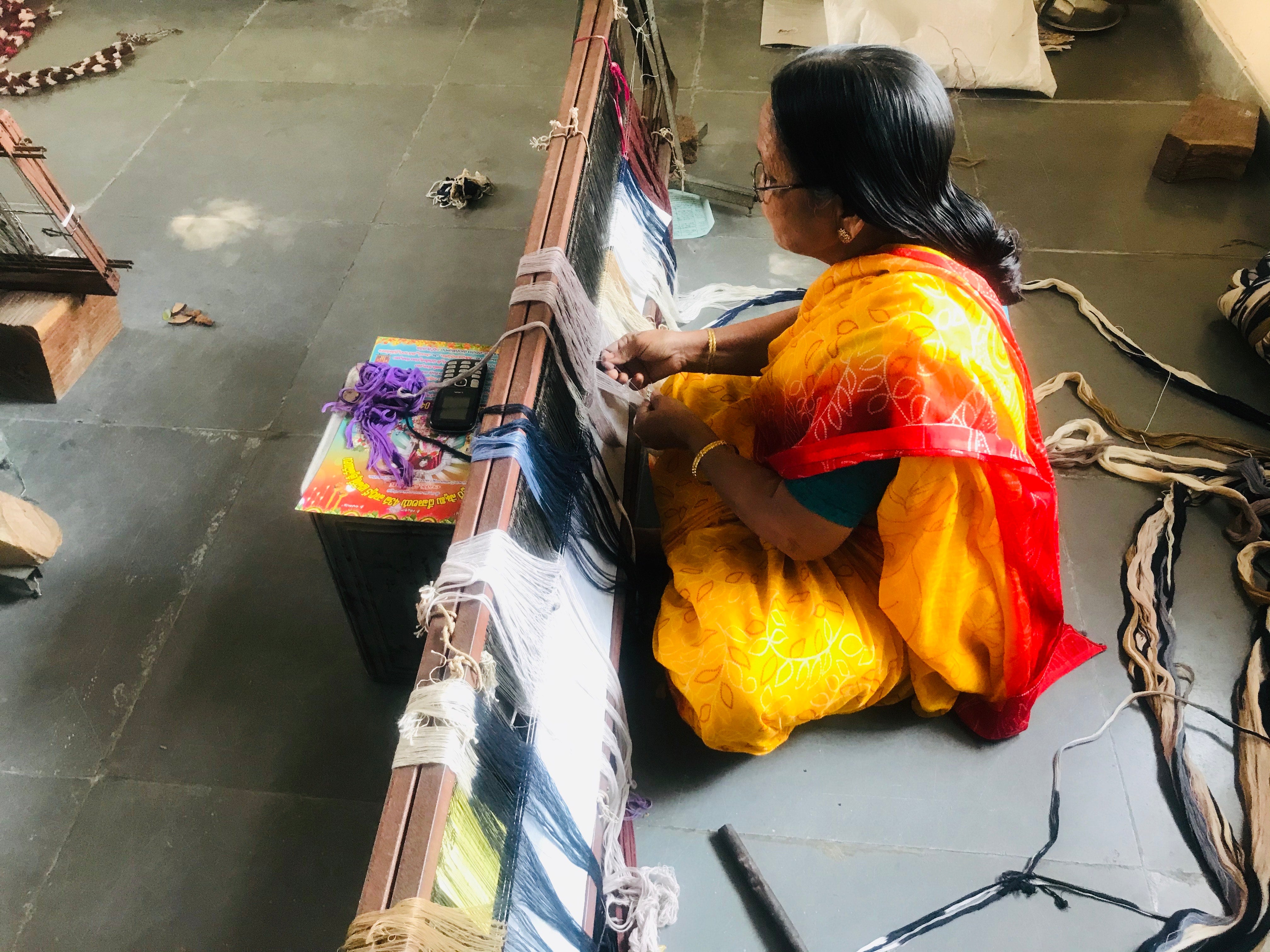CRAFT IN THE SPOTLIGHT | Telia Rumal Double Ikat
We had our first tryst with the Telia Rumal double Ikat weave when we visited Puttapaka village in 2012. We spent a day talking to several master weavers tie dye artisans etc to understand the technique and how the weave evolved over the years. The amount of precision and math needed to weave these geometric patterns amazed us.
Origin & History
Telia Rumal literally means ‘Oily Handkerchief’. The craft has its origin in Andhra Pradesh and dates back to early 19th Century. Though it started in Chirala, it’s mostly practised by a few weavers in Puttapaka village of Nalgonda district. The rectangular telia cloths were used as a veil/scarves by women and a multipurpose cloth by men (turban, lungi, shoulder cloth). They were also exported to Asia, Africa and other Gulf countries. We were told that the printed replicas produced by Manchester textiles was the reason behind the decline of this craft. The technique was later adapted to create sarees, dupattas and yardage.
Process
Telia Rumal is a very intricate and laborious double ikat weave. As the name suggests the yarn is treated with oil. The products used for the treatment of the yarn are sheep dung, castor pod ashes and oil. The treated yarn which is used for the warp (length) and weft (width) is tied and dyed in accordance with a predetermined geometrical design. Each of the warp and weft threads are individually positioned on the loom prior to weaving hence it’s crucial for the weaver to ensure perfection. Only 3 colors are traditionally used – red black and white in geometrical designs. Weaving a telia rumal needs a great amount of practice and precision for the warp and weft to be meticulously converted to an artistic design. The number of motifs makes it more complex and difficult to weave.

Changes over the years
Due to the laborious process of the oil treatment, it has been done away with. Textile collectors and political leaders still commission the oil treated sarees though and they cost Rs.1.50 lakh upwards. The motifs were originally woven using the double ikat technique. However, to keep traditional craft alive and make it more accessible, the master weavers introduced these motifs in the single ikat technique {weft design}. A combination of vat and naptol dyes are being used to weave sarees, dupattas and yardages. Number of motifs has increased from 2 to 4, 6, 9, 12, 14 and 36 with multiple color ways. Weavers from other villages in Nalgonda have also started weaving Telia Rumal motifs. However, since they are not as skilled as the Puttapaka weavers, the motifs appear to be stretched out and blurred at times. Most Telia Rumals are now mercerised. Mercerisation is a finishing technique where the yarn is chemically treated for strength, lustre and better color absorption.
Coming to an important aspect
Master weaver Gajam Goverdhan applied for the GI [ Geographical Indication ] tag on behalf of the Puttapaka ikat weaving cluster. The Puttapaka telia rumal received it’s GI tag in May 2020. The current processes do not comply with the GI regulations however a lot of master weavers have distinct views on whether the weave should be referred to as telia rumal or double ikat. Some of them are of the opinion that since the oil treatment has been done away with the term Telia Rumal should be replaced with double ikat. And some master weavers refer to it as the Telia Rumal double ikat since the traditional motifs are still being woven and using the term has helped popularise the weave.

What determines the price of a telia rumal double ikat:
Pricing of a telia saree depends on various factors. Hope the below list helps you in making an informed decision.
- Provenance - All the highly skilled weavers are in Puttapaka. Telia rumal double ikat’s woven in Puttapaka have smaller motifs and better precision hence more expensive. When you see sarees with larger telia motifs that look stretched out and blurry it means those have been woven in the surrounding villages in Nalgonda district.
- Number of motifs - The more the number of motifs the more expensive. 2, 4, 9 and 12 motifs are the ones that are being woven at the moment. 36 motifs have been done only on dupattas and considering how labour intensive it is the master weaver we work with stated that he has no plans of doing sarees
- Dyes - 2 most popular ones are Vat and Naphtol dyes. Naphtol dyes are harmful for the skin yet weavers use them because it is economical and the colours are brighter compared to vat dyes. Natural dyes are also being used in Puttapaka.
- Yarn count - Higher the yarn count higher the price. Sarees are mostly woven in 2/80, 100/120 and 2/120 counts
- Mercerised/Non mercerised - Only some weavers in Puttapaka make the non-mercerised ones that are slightly thick and coarse. All others weave the mercerised ones and use it as a USP. Mercerisation is a finishing technique where the yarn is treated with a certain percentage of sodium hydroxide for lustre and strength.
- Oil treatment - This process has been done away with. However, two national award winning master weavers commission the oil treated sarees for textile connoisseurs, politicians etc. An oil treated saree costs 1.5 lakh upwards.
- Single/Double ikat - Telia rumal motifs were always woven using the double ikat technique. However to meet the high demand over the last three to four years weavers introduced the telia motifs in single ikat (weft design). Single ikats are less expensive and can be woven on a powerloom as well.
- Print/Weave - Lastly and sadly there are surat printed telia rumal sarees available in the market. Resellers are selling them as patola sarees. A ‘big’ retail brand also sells telia rumal printed kurtas. These are easy to identify though. You just need to look at the reverse side.

As a responsible brand that promotes sustainable fashion through fair trade practices, we are doing our bit to create new markets for the Telia Rumal Double Ikat through contemporary design. Our range of garments and lifestyle accessories is an endeavour towards preserving traditional craft and create sustained work oppurtunities for artisan communities in rural India



